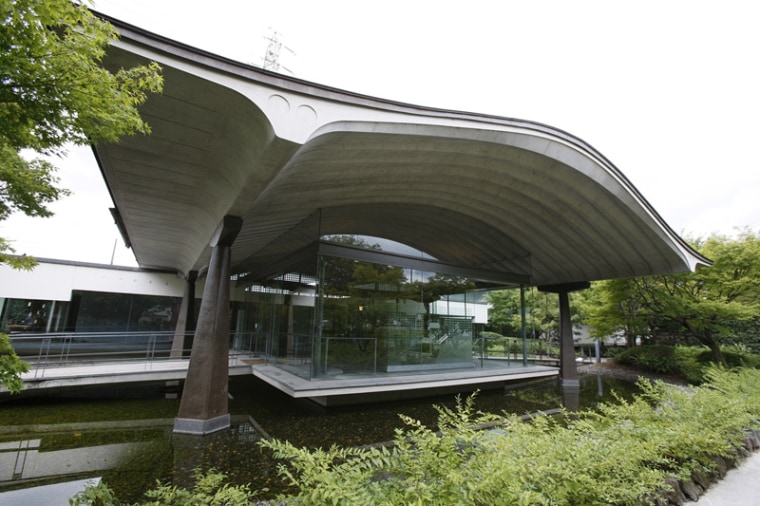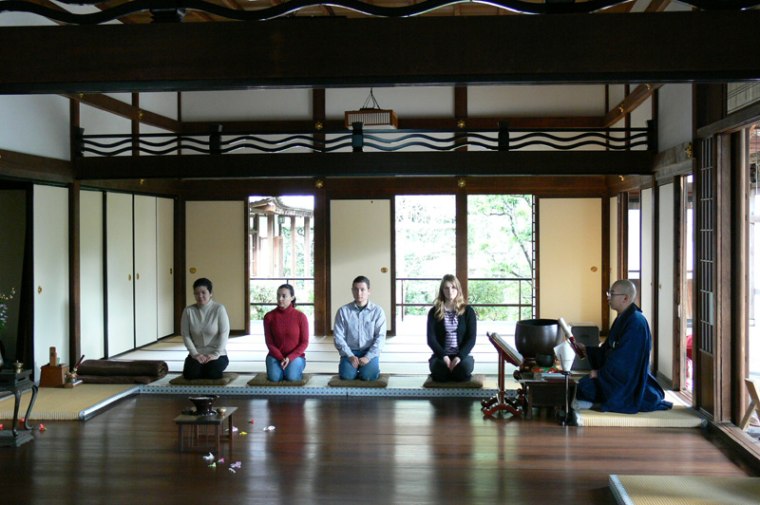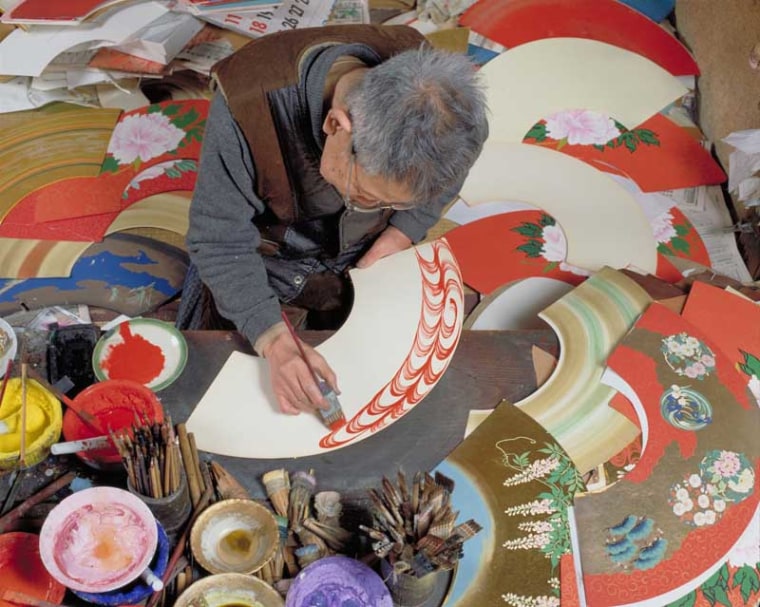In the Tokyo neighborhood of Harajuku, side streets spill over with young Japanese engaged in “cos play”—role-playing by way of elaborate costumes. Elvis imitators preen and croon to giggling girls in extra-long Frankenstein boots and burgundy hair.
On the area’s main drag, Omotosando-dori, the uniform leans toward Armani and Burberry. Thousands troll the dramatic flagship stores of Europe’s top designers while nibbling on pastries and chocolates. A short walk from here, kimono-clad women fan incense smoke, drink ladlefuls of water from a central basin, and then stroll past bamboo and irises on their way to Meiji shrine.
Whatever your image of Japan—these are just three of the most common—a standard 10-day visit to Tokyo and Kyoto can present an adequate picture. By immersing yourself in quotidian life, though, as well as by indulging in a few structured experiences, you’ll be rewarded with a fuller understanding of Japanese culture.
“The whole thought process in Japan is different—that what’s so precious about it,” says Judith Clancy, operator of Kyoto Workshops and author of "Exploring Kyoto". “Every aspect of Japanese culture is about respect for self, for others and for objects ... It’s fun to dig a little deeper.”
Kyoto is a great place to start. This year, the city and its environs mark the 1,000th anniversary of the publication of The Tale of Genji, widely considered to be the world’s first novel and one that pays homage to the very essence of Japan. A host of promotions and special exhibitions explore the locations and court traditions detailed by author Lady Murasaki Shikibu, a noblewoman who served Empress Shoshi while she wrote the famous story of a philandering prince.
While in Kyoto, spend at least one night in a ryokan, where you’ll soak in an onsen, or hot tub. Then indulge in a lavish dinner, sleep on a real futon (complete with buckwheat-filled pillow) and wake up to miso and sashimi at breakfast. Just don't expect certain things, such as a lot of furniture in the room, privacy, storage space nor much English spoken. It's an experience you won't soon forget.
Central to your time at the ryokan is kaiseki, a multi-course dinner where food and serving ware are carefully matched, and chosen according to the season. “Food is extremely important,” says Steve Beimel of Esprit Travel in Kyoto.
“The variety ... is astounding and visitors can explore flavors, colors and textures they’ve never dreamed existed.” Food preparation classes like those offered by WAKJapan and the Japanese-only sushi classes conducted by the restaurant Sushi Zanmai open your eyes to the aesthetics and precision so important to Japanese cuisine. Tokyo’s restaurants were recently awarded more Michelin stars, cumulatively, than anywhere else in the world.
By all means, enjoy these top-notch establishments—but don’t neglect the lower-brow dining options of street food and good beer. In addition to the portable ramen stands abundant in any major Japanese city there are the izakaya (the equivalent of a working-man’s pub) and yakitoriya (specializing in grilled chicken skewers). Before calling it a night, drop a few coins into a vending machine for your brew (beer, coffee, sake) of choice.
As with food, traditional arts like flower arranging, tea ceremony, sword fighting and calligraphy are highly evolved elements of Japanese culture. “They’re paths of personal self-cultivation based on Zen teachings, mastered by courses of very intense study,” says Beimel.

There are plenty of opportunities to try your hand at an art like ikebana or calligraphy. “It’s not hard for you to produce a kanji of a mountain or a river,” says Clancy, “and soon the story behind the character, and the way the brush moves and what it all means really starts to come together.”
Despite its affinity for tradition, Japan has never been shy of exploring the new—and shopping is a favored means to that end. A walk down the aforementioned Omotosando-dori on a Sunday afternoon—parade central for Tokyo—is a must for a peek at this side of things.
So is an afternoon in Akihabara, Tokyo’s ever-expanding “electric town” From Maid Bars—where waitresses dress up in French maid costumes and address their mostly male clientele as “master”—to sprawling concrete buildings ablaze and abuzz with videogames, digital cameras and cell phones, no neighborhood does a better job of presenting Japan at its coolest.

Finally, get to know the Japanese by joining them at a sporting event, which—whether it's their version of baseball or the ritualistically native sumo wrestling—offers opportunities to study Japanese crowd behavior, sportsmanship and, yes, food.
Basu boru games feature treats like dried squid and katsu (chicken cutlets) and drum-beating throngs, while sumo can be summed up in the 10-seconds of collective breath-holding before a victor emerges.
At temples and ryokan, department stores and baseball stadiums, you’ll come across the essential experiences of Japanese culture. Through an increased awareness of the beauty of things, a heightened responsiveness to nature, and meticulous attention to detail, you’ll come away enriched.
